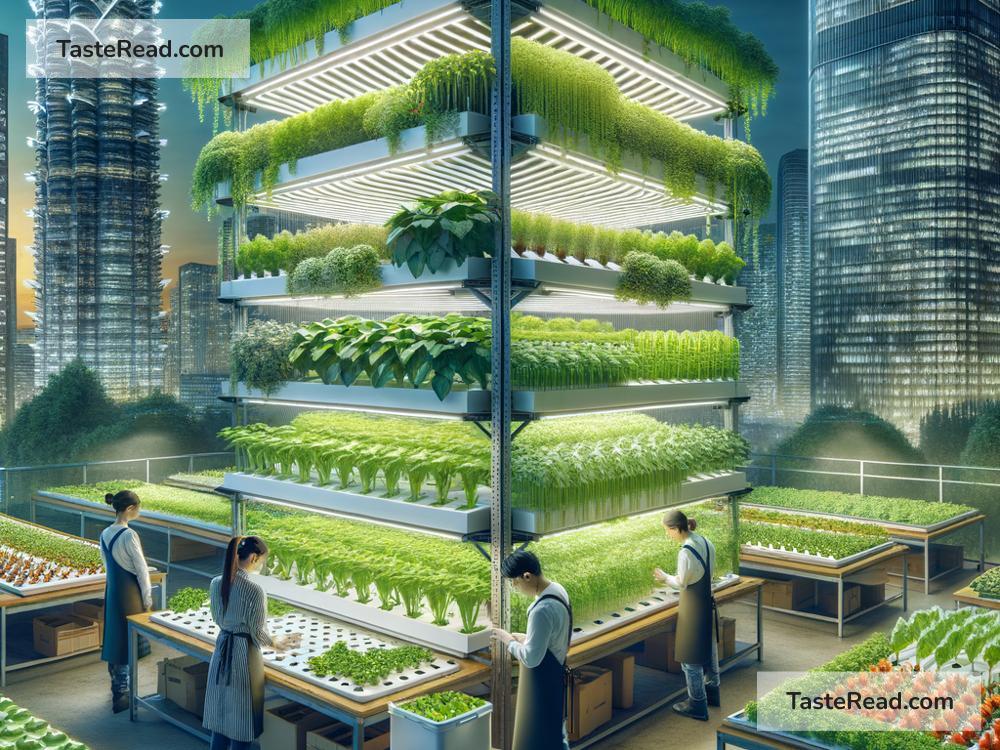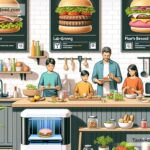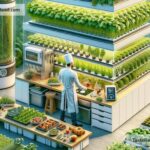The Future of Food and Economic Resilience
Food is a basic need for every human being. It nourishes us, keeps us healthy, and fuels our daily activities. But as the world changes, the way we grow, produce, and consume food is also evolving. Climate change, economic shifts, technological breakthroughs, and population growth are making us rethink the future of food and how it can provide economic resilience. In this blog, we’ll explore how food systems are changing and why building a more resilient economy starts with rethinking what’s on our plates.
Challenges Facing Food Production
Today, the world faces many challenges when it comes to food:
-
Climate Change: Rising temperatures, unpredictable weather, and droughts are hurting farms worldwide. Crops like wheat, rice, and corn—which are staples for billions—are struggling to grow in changing conditions.
-
Population Growth: By 2050, the world’s population is expected to surpass 9 billion. Feeding more people means we’ll need to produce more food without using more land or natural resources.
-
Resource Scarcity: Water and fertile soil are becoming harder to find. Overuse of land and pollution are making it difficult to sustain traditional farming methods.
-
Economic Inequality: Access to healthy and affordable food is still a challenge for millions of people. Many communities face food insecurity, meaning they don’t know where their next meal will come from.
All these factors make the future of food unpredictable. But they also push us to find smarter solutions.
Innovations in Food Systems
To solve these challenges, scientists, farmers, and entrepreneurs are coming up with creative ways to grow and produce food. Some of the most exciting innovations include:
-
Vertical Farming: Imagine a farm inside a skyscraper that grows fruits, vegetables, and herbs using stacked trays instead of soil. Vertical farming uses less water and space while producing fresh food even in urban areas. Cities like Singapore and New York are already using these futuristic farms.
-
Plant-Based and Lab-Grown Foods: Many companies are creating meat alternatives, like burgers made from plants or lab-grown meat. These products use fewer resources than traditional livestock farming and reduce greenhouse gas emissions.
-
Aquaponics and Hydroponics: These systems grow plants without soil, combining water and nutrients to grow crops fast. Aquaponics even uses fish waste to fertilize plants, creating a sustainable loop.
-
Food Waste Reduction: Approximately one-third of all food produced globally is wasted each year. Technologies that track food expiration dates, improve storage, or recycle leftovers are helping minimize waste.
-
Blockchain for Food Supply Chains: Blockchain technology allows farmers, distributors, and grocery stores to track food from farm to table. This ensures transparency, reduces fraud, and helps predict shortages before they happen.
These innovations are changing the food industry and giving us a glimpse into a future where food production is smarter, sustainable, and more efficient.
Building Economic Resilience Through Food
Food is not just about feeding people—it’s also connected to the economy. A strong food system can help communities become more economically resilient. Here’s how:
-
Job Creation: Agriculture, food manufacturing, distribution, and retail are major sources of employment. Investing in modern food systems can create new kinds of jobs, such as vertical farm engineers or food waste management specialists.
-
Supporting Local Farmers: Local farms keep communities healthier and economically stable. When people buy from local growers, money stays in the community, boosting small businesses and reducing reliance on big corporations or imports.
-
Reducing Healthcare Costs: Poor eating habits contribute to obesity, diabetes, and malnutrition. Affordable, nutritious food can help reduce healthcare expenses by preventing chronic diseases and improving overall public health.
-
Strengthening the Food Supply Chain: Resilient food systems mean fewer disruptions during crises like pandemics, wars, or natural disasters. By using technology to predict food shortages and improve distribution, we can avoid price spikes and ensure everyone has enough to eat.
-
Empowering Women and Marginalized Groups: In many countries, women and minority groups play a critical role in farming but lack access to resources. Investing in education, tools, and land ownership for these groups strengthens rural economies and promotes equity.
What Can We Do as Individuals?
The future of food isn’t just about governments or big companies—it’s also about the choices we make every day. Here are some ways you can contribute to a better food system:
-
Support Sustainable Brands: Look for food companies that prioritize eco-friendly practices, fair wages, and reducing waste. Every dollar you spend can drive positive change.
-
Buy Local and Seasonal: Local fruits and vegetables are fresher and reduce transportation pollution. Seasonal produce is often cheaper and uses fewer resources to grow.
-
Reduce Food Waste at Home: Try to plan meals, store food properly, and use leftovers creatively to minimize waste. Small actions add up.
-
Experiment with Plant-Based Meals: Eating less meat can improve your health and decrease the impact of livestock farming on the planet.
-
Educate Yourself and Share Knowledge: Learn about global food issues and discuss them with your friends and family. Awareness is the first step toward making better choices.
Conclusion
The future of food is full of challenges, but it’s also brimming with opportunities. With the right innovations, policies, and individual habits, we can create a food system that feeds everyone while protecting the planet. A strong food system also builds economic resilience, ensuring communities thrive even in uncertain times.
It’s time for all of us—farmers, businesses, governments, and consumers—to work together and rethink the way we eat. The choices we make today will decide the meals of tomorrow. Let’s make sure those meals are sustainable, healthy, and abundant for generations to come.


